-
Posts
2,331 -
Joined
-
Last visited
-
Days Won
119
Content Type
Profiles
Forums
Gallery
Everything posted by SubzeroLT
-
Picked up a frag from fellow reefer recently. All the best on your future plans. Here it is in my tank. Hope I can maintain the lovely colors. Some other pics taken yesterday. Most with yellow filter. Bali shortcake (From Coral Fanatics SG) Divaricata (From Coral Fanatics SG) Space Invaders Pectinia (From Coral Fanatics SG) Horrida (From Reefing Reality) From reefer (originally from S5) Love the colors of this branching hammer (From Coral Fanatics SG) Holy Grail torch Fiji pink birdsnest
-
It has been one month+ since using the Mastertronic. And about 3yrs+ with the Alkatronic. There has been queries from fellow reefers along the way. I'll share some pics & comments here. Let's start with Mastertronic. Configuration & setup : Mine is set up to run Ca, Mg, PO4 & NO3. While the Mastertronic is able to test Alkalinity (using Salifert test kit), I configured mine to skip alkalinity and continue to use Alkatronic to measure this parameter. Alkatronic uses its own proprietary reagent to measure the change of pH using a pH probe. Each bottle can last ~2500 tests => at least 1.5yrs based on 4 tests per day. Moreover, the Alkatronic has an extra dosing pump to automatically dose alkalinity solution when it drops below the range. Accuracy : The Mastertronic use various test kits major brands, namely Red Sea (Phosphate, Magnesium), Fauna Marin (Nitrate), API (Calcium), Salifert (Alkalinity). I did some manual testing using the same test kits just to check accuracy. Mastertronic is spot on accurate for all the parameters. However, I did notice that Magnesium seems to read higher on Red Sea test kit compared to Salifert Magnesium. I'd trust the Red Sea Magnesium test kit a little more since it is all liquid reagents. On the other hand Salifert kit uses some crystals in the testing that is quite hygroscopic (absorbs moisture). I suspect this affects the accuracy since I'm actually adding less crystals when its laden with moisture. In any case, the small difference does not bother me. Overall the Mastertronic has been quite problem free. A couple of things to take note during installation. Some have complained of bent needles. I've not had any issues personally. I suppose its important to ensure the needle is fully inserted & fairly straight. A more likely cause of bent needles is improper positioning of the vials of reagent. The bottles must be fully inserted in the carousel. If the cap is not fully closed, the top may not slide in properly and result in the needle poking the plastic lid (instead of the silicone membrane). The needle may also bend further if its inserted at an angle, into an unclipped & moving vial. This is the inside view of the Mastertronic. At work, my boss often says "What gets measured gets done". In the same way, having water parameters get tested on its own, on a regular basis, ensures you are on top of water parameters. Encourages one to take action towards the target numbers. My numbers are not perfect but getting there. Test frequency : Nitrate : 1x a week Phosphate : 2x a week NO3 : 1x a week Magnesium : 1x a week OLI : 1x a week Alkalinity (via Alkatronic) : 4x a day So far, all is good with the Mastertronic. New firmware updates are pushed down to the unit automatically and cloud connectivity has been reliable. As with any new products, we expect to see more firmware releases in the initial months as corner case bugs get resolved. So far none has affected my operation. Next topic on Alkatronic. its been a workhorse since February 2018 (see original post here: https://www.sgreefclub.com/forum/topic/142862-my-slice-of-nature-part-3/?do=findComment&comment=1318876) Looking back, it probably saved my tank on several occasions. I will never run a tank without one. From the 4x daily KH measurements, you are able to understand what's going on. KH dropping very fast during the day (when lights are on). I'm using a calcium reactor. Tank consumes about 1.7dKH a day. With the alkatronic, it is possible to detect if the calcium reactor outlet tube is clogging as less effluent is coming out. This happened before when I was away on a business trip. I then triggered a fellow reefer to my place to unclog the calcium reactor. In the meantime, the Alkatronic was dosing alkalinity solution till help arrived. KH decreases gradually over the week. This could either be the dosing is slowing down gradually (measure it). Or a sign that the corals are consuming more Unable to hold KH levels. Bigger than usual swings from day to day. This is a tell tale sign of low salinity. I usually get this if salinity drops to about 1.023 - 1.024SG (instead of 1.026 / 35ppt) KH increases gradually over the week. There could be 2 reasons More is being dosed. Check calcium reactor effluent rate or dosing pump accuracy Corals not growing / consuming (more likely case). When this happens, its usually some water parameter is out of balance. Usually I'll detect that potassium is very low (eg. 350ppm instead of target 400ppm) or Magnesium (1260ppm instead of target 1400ppm). I've also noticed that dosing trace elements increase consumption slightly. KH increases beyond 13dKH. This is usually a hardware fault. The maximum that Alkatronic can read is 13dKH and give a Code3 error. The unit determines the kH level based on the amount of reagent added. Higher alkalinity if more reagent is added. However if the reagent nozzle is clogged, no reagent is dispensed into the beaker, but the unit is still counting the volume. Check the pink nozzle. Unclog it. In my case, I snipped a bigger hole and recalibrated the pump. The issue didn't come back again. Reagent tubes leaking. The only tube that has a higher chance of leaking is the 1.6mm one for the reagent. It stretches over a acrylic tube. Especially if you tug & pull it, it can develop micro holes or cracks over time. As a preventive step, I snip off the ends ever 6 months or so. This is what it looks like after 3 years of use. The internal peristaltic pump tubes and the 1.6mm reagent hoses have been changed once around the 2.5yr mark. You can see from the color of the hoses. The pH probe is still the original set. Its calibrated once every 6-9 months. I've changed the hoses once so far. They weren't leaking or anything but just a preventive move.
-
Cause related to DOC may be hard to prove without controlled experiments & proper equipment. What I have is anecdotal data which may not be able to demonstrate root cause or nail down to the factors affecting the result. Bacteria is a new topic & am keen to explore more. I did notice 2 incidences of massive SPS RTN (really overnight) several days apart. A slimy cloud was observed just above the rocks. Sections of various SPS colonies in contact with the slimy cloud had the flesh peel off overnight. Everything else above it was OK. In both incidences, the tank were fed with Ocean Nutrition Oyster Feast the night before. Don't get me wrong.... Oyster Feast is fantastic food for the tank. But this bottle went bad -> And hence I was actually dosing massive ammonia laden liquid onto the corals. Once the cloud was turkey basted away, the RTN stopped. Coral did not recede further. I mention this here to highlight the importance of ensuring you feed the freshest food possible. I noticed something odd on this bottle of Oyster Feast. Whenever the cap was popped open, there was air gushing out (like opening a coke bottle). I didn't recall this in previous bottles used. I supposed that it'll stink of fishy stuff if it had gone bad. But instead it smelt a little sour. I thought it was odd but continued to use it because good money was spent of it. (just a week old...$30 bottle of food). After 2 incidences, I put some oyster feast under the microscope. 2 observations : 1) Bubbles continued to form between the 2 layers of glass slide. Some kind of gas (CO2? Nitrogen?). The drop of oyster feast is fermenting. 2) The liquid was quite clear. Very tiny bits were present but most of it was liquid. It is very different from microscopy pic of what it should look like. My conclusion is that the food had gone bad. The addition of this increased the level of ammonia / DOC, arising in a cloud of ciliates. Some reefers may refer this as 'bacteria cloud' which in reality is a bacteria layer loaded with ciliates.
-
.thumb.jpg.57c2e34da3fe90fcdb8e11c6a93f46a9.jpg)
[New Reefer] Cycling new tank
SubzeroLT replied to mhcraft's topic in New to the Marine Aquaria Hobby
Exciting days ahead!! I noticed you commented about using kalkwasser with ATO. In your case, as you do not have corals, Ca & KH should not reduce as it is not consumed. But by adding kalk, you may be continuously increasing Ca & Alkalinity. Personally, i won't be bothered with pH (don't chase the numbers). Without corals, just use fresh water for ATO. Regarding biodiversity, don't add live rocks from LFS. They are loaded with pests and risk doing more harm than good. In any case, once you add corals, you will get 'new' bacteria anyway. If you are 'kiasu', just add different brands of bacteria along the way. Microbacter7 is good. Prodibio BioDigest or Fauna Marin Bakto Blend are also other good products. Regarding the ugly diatom phase, just wait it out. Diatoms are actually algae in a silicate (glass) shell. Don't stir or blow it off. Siphon out the diatoms when you do water change to export them permanently. Phosphate reducing media (GFO, Rowaphos) are known to bind silicates. The old school of thought from many years ago is to have close to zero nitrate/phosphate (similar to natural sea water). The current common practice is to have slightly elevated levels since the home aquarium environment is different from the ocean. Again, recommendation is not to chase numbers to get close to 0 nitrate/phosphate. Fish & most corals are tolerant. Even if you have 25ppm nitrate of 0.1ppm phosphates, the tank will do fine. -
I've started to journey into the microscopic world of the reef tank. Invested in a good microscope with a camera hooked up. Its great to be able to pinpoint issues and apply the correct fix. For example : Is this dinoflagellates or diatoms? What kind of algae is this? Or be able to identify various parasites. For a start, many have experienced brown jelly disease on hammer & torch corals. The common advise is to discard it immediately as the brown jelly can spread. Another common advise is to dip the coral with coral dip or with iodine to disinfect it. This post hopes to give some insights on what works & what does not. Under the microscope, the brown jelly are actually a huge colony of a type of protozoa (single celled microscopic animal) known as ciliates. They are characterized by the presence of hair like organelles called cilia. Pic from Wikipedia From numerous articles (eg : https://www.sciencedirect.com/science/article/abs/pii/S1385110115300095), the common ciliate associated with coral diseases are Philaster Lucinda & Philaster Guamense Pic below taken by my microscope. The brown bits you see are zooxanthellae. Some have been ingested. I tested some new purchased / store bought hammer corals and a tiny amount of the ciliate are present. Apparently, ciliate are always present in the water but have no effect if the coral is healthy or if the population of the ciliate is small. However, when they colonize in large populations, they attack the weak coral & the infamous brown jelly or RTN occurs. I collected the brown jelly & soaked them in various kinds of coral dips and iodine. Apparently, the ciliates do not die! All still alive! This means that while coral dips & iodine may do well to 'wash' the coral, bits of this parasite are still present and can cause further issues. Possibly that's why brown jelly tends comes back a few days later. In the video below, you will see big colonies of the ciliate. This slimy cloud contains the parasite that can move around to infect the nearby coral. Hence the advise to dip & trim away the infected piece is correct. Of all the products tested, the only one that actually destroys the ciliate is Polyplab Reef Primer. Within 10 minutes, the cilates stop moving (die!) and the cell walls start to disintegrate. And if left for longer periods, it seems to disintegrate entirely (or perhaps it becomes so transparent that I can't see with my microscope) Next step is to understand how to prevent brown jelly or ciliate colonies in the first place.
-
There could be various reasons. But one likely one is that it is bleaching due to excessive light. Gonio generally prefer low light conditions. From the picture, it seems to be placed at a location that's bright enough for SPS/Monti. Perhaps its too bright. Would suggest to bring it to a more shaded spot.
-
Definitely a very well thought out design & set up. Hope to swing by one day
-
I shared about washing the sulfur reactor 2 weeks ago which in a way 'reset' it and needed to be cycled again. The drip rate today (about 2 weeks since) is almost back to original state. As can be seen by the Mastertronic's nitrate table history (read from bottom to top). Nitrates running around 7.6ppm now. Not bad. I'm a firm believer to feed more to the tank. Just have a better nutrient export system to handle the extra load. Aside from the regular pellets (2x a day), nori seaweed (about 2-3x a day since there are quite a few Tangs), a cube of home made fish/prawn minced prawn, the following are also fed. Pumps/wavemakers in feed mode so they remain in the display tank longer. My feed mode is set to 20min. A must have....Reef Roids. Every 2-3 days. Target fed but most will be blown around the tank for pick up anyway. Mostly in very early morning when the mesenterial filaments are still out. DD Reef paste. I shared this some years back. Contains fish and shellfish extracts. Has complete balanced profile and a blend of soluble amino acid to trigger the feeding response in both fish and corals. Fish love this too. LRS Reef Frenzy. A tiny piece goes a long way. Mostly broadcast feed. The corals love it. Oyster Feast & Phyto Feast. Oyster feast - contains oyster eggs, gonads and tissue. High levels of protein and omega-3 fatty acids. Good for SPS, gonios & filter feeders. Phyto feast - I stopped culturing my own phyto to supplement some variety of food for the pods in the tank. So this is quite convenient. Don't think its a must, just good to have. Not expensive anyway.
-
Went through the very dreaded task of rinsing the sulfur reactor last weekend. Saved up 3 buckets of tank water during water change to rinse the mulm off the sulfur beads. Nevertheless, the reactor needs to go through the cycling process again (hopefully shorter cycle) In the process, the ceramic shaft of the pump was found to be broken. Good thing a spare was available in my stash of spare parts. A good time after that to put up the hammock & relax. From Airmocks : https://www.airmocks.com/
-
Quick update on the Mastertronic. Its expected to be a crazy busy year on my side, so having a Mastertronic will be critical to ensure the fundamental water parameters are kept in view. Installed on 18th February and have been testing it the past few weeks first before giving an update here. Sitting next to the tank. The tubes are standard 2m in length and should not be altered. 1 tank water inlet, 1 RODI inlet (for rinsing) and 1 waste water outlet (into a waste bucket). Test kits used. This should last about 6 months. Reagents loaded in the carousell. Calibration is quite straight forward. Only 2 pumps need to be calibrated. Easy to check accuracy by testing outlet water. The trick to getting good calibration & accuracy is to ensure the hoses are fully primed before calibration. I struggled a little with Pump A calibration (not accurate after calibration). The trick is to give it an extra prime. In fact, it was suggested we check & re-prime as necessary in the user manual. I validated pump A & Stepper pump accuracy every day for the past weeks just to ensure it remains accurate. Its spot on 7ml (target)
-
Left side is under the center bracing. Its generally brighter on the right side (under a Hydra64 fixture), perhaps that contributes to the slightly different growth pattern.
-
Some coral pics from today Tunicate. Not very popular/common in the hobby because they are supposed to be quite hard to keep alive. This particular one has been at Iwarna for many months & assume this species may be possible. Tunicates are non-photosynthetic but do need to be placed in a place with good flow in order to catch Tunicates are filter filters that take in water through their pharynx Recent Horrida frag from Reefing Reality. Quite a good selection of frags at RR & many LFS recently Another Horrida Fiji pink birdsnest. This piece was grown from a 1cm frag. Recent addition - Trachyphyllia from Coral Fanatics Photosynthetic gorgonian Time to trim the bali slimer Superman Blasto
-
One screenshot from the Facebook Live event on 21st Feb. Full video here. Long countdown in the initial section of the video. Need to forward to 3hr 32min mark to watch the event. https://www.facebook.com/watch/?v=862706797910592
-
As others have mentioned, feather worms are generally beneficial. But if they grow to pest levels, one option is to introduce bubble bee snails to control the numbers. Do note that bumble bee snails are predatory in nature and may eat other snails if its able to get to it.
-
.thumb.jpg.57c2e34da3fe90fcdb8e11c6a93f46a9.jpg)
White patches on birdsnest coral
SubzeroLT replied to ianmphua's topic in SPS and Advanced Reefkeepers Forum
It could be many reasons. Lights - best to measure PAR to know if its too high/low. Trace elements - possible if any are zero for extended periods of time and affecting cell function. Definitive way to know is to send for ICP test. Then dose trace elements accordingly. If not willing to spend this $$, just do very very major water change to refresh to new water. Other water parameters - Ca, Mg, Kh, K, pH, NO3, PO4 are some things you can measure with home test kits. -
I switched over to the DD FR75 fluidized reactor for Rowaphos. My previous reactor was short & had a flat base. Noticed that not all media inside the reactor tumble. Just a small section only. The DD reactor has a concave base which re-directs water upwards to improve tumbling effect. Its also quite long - which is actually very important for fluidized reactor - so you can get high flow rate through the reactor but yet allow the fine bits to lose momentum as it rises & fall back down. i.e. not flow out. To emphasize, the concave base & extra height is important for media that needs to be fluidized like rowaphos & biopellet. Not critical for media that do NOT tumble such as activated carbon or zeo stones. Someone asked me about the salt I'm using now. This is it :
-
Often we don't clean the skimmer due to the hassle of disconnecting the skimmer pump wire through the spaghetti of wires in the cabinet. What I did after the warranty ended was to extend the pump wire with a IP67 waterproof connector. Then dismantle the various parts for cleaning. As for the pump, just dismantle & wash the parts in a bucket of water there. Don't forget to clean the venturi valve as there can be calcium deposits blocking the air flow. Inter-dental brushes are great for cleaning the tiny slots of this piece. This was from Daiso. A friend was planning to put some fish in his sump & requested a skimmer guard. I printed one for myself as well.
-
Full tank shot (with DD Coral Lens) The torch tentacles can be quite long. Can be quite devastating for the gonio garden nearby. There were many vermatid snails growing on the torch colony. I've found it useful to break the vematid snails' shell with a frag cutter and bubblebee snails will home it within a few hours.
-
Great you found the root cause. You can take a bit of water out. Then drip in RODI water slowly to dilute the water. Measure continuously so you don't overshoot. This should work well as the reduction in salinity will be quite slow.
-
Alkatronic regent finished already. Think this bottle was since Aug 2019 A random pic from this week :
-
I think that's likely the root cause. Swing arm salinity meters are notoriously inaccurate. Suggest you invest in a optical refractometer as a first step.
-
Suspect there could be measurement errors. What is the salinity you are running at? What type of device are you using to measure salinity? It is possible that your salinity is very high - hence the high numbers. Aside from letting it deplete naturally, the only way to bring down Mg, Ca is to change water with 'good' parameters.
-
Love the colors!
-
.thumb.jpg.57c2e34da3fe90fcdb8e11c6a93f46a9.jpg)
Does a Softies Tank really need a chiller
SubzeroLT replied to Validator's topic in Soft Coral Forum
Agree with the points above about keeping temperature below 30degC. My experience with non chilled tank : Can keep some more tolerant zoanthids in such conditions. Some will melt. Can keep green star polyp (GSP) Can keep forest fire cloves Cannot keep Purple cespitularia You can see some pictures in this post : https://www.sgreefclub.com/forum/topic/142862-my-slice-of-nature-part-3/?do=findComment&comment=1298008



.jpg.1ba4fb9c12eed1545a2394deff202811.jpg)
.jpg.766202aae9f523be6c744bb10ed1cbd0.jpg)
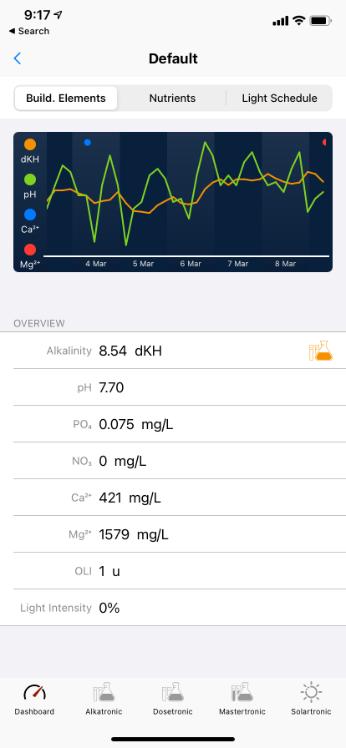
.jpg.b93a5b7e037c745119ed6f730bcd388f.jpg)
.jpg.3d8010be7277f899eeaa6f2aad1ebf5b.jpg)
.jpg.44e05592adec361335da722856eda0fe.jpg)
.jpg.425999fed17df22084875224babe5653.jpg)

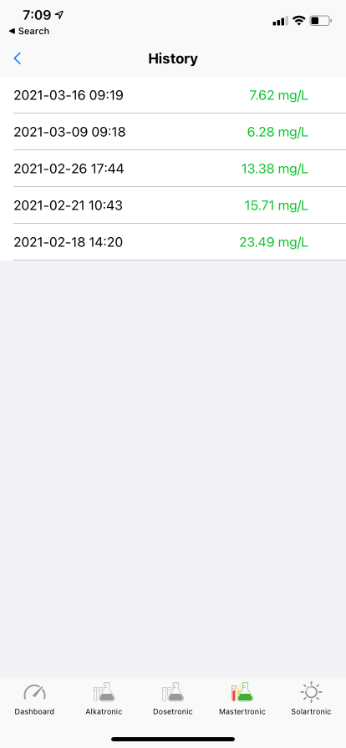
.jpg.b0757cb73f2b403ad435529b53d826cc.jpg)
.jpg.631a15a4398b11a3d07a06712a3a0947.jpg)
.jpg.38e02e0d8d9061175edd4ba0fb463185.jpg)
.jpg.8a154c322d5f7639e8a3bfcb31963748.jpg)
.jpg.c2de1e15170e54cfe1dcaaf109bff3d7.jpg)
.jpg.077e321c9dd7246d92bf38f8c87aad51.jpg)
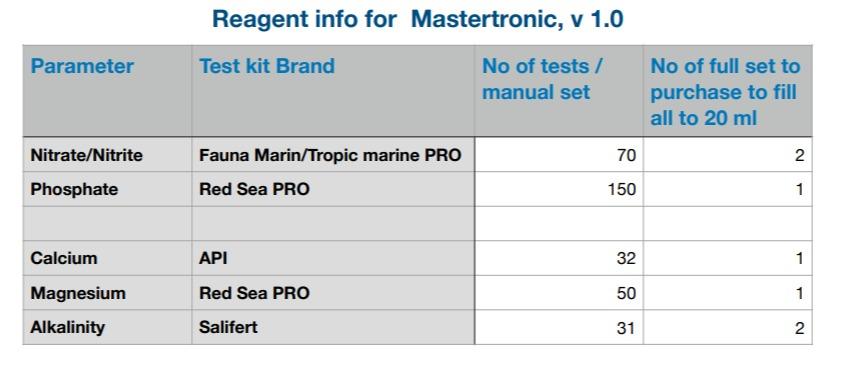
.jpg.f4480264c66bde70225518452efef6d8.jpg)
.jpg.39cb80b0ae14dacec4486b66770bd5ae.jpg)
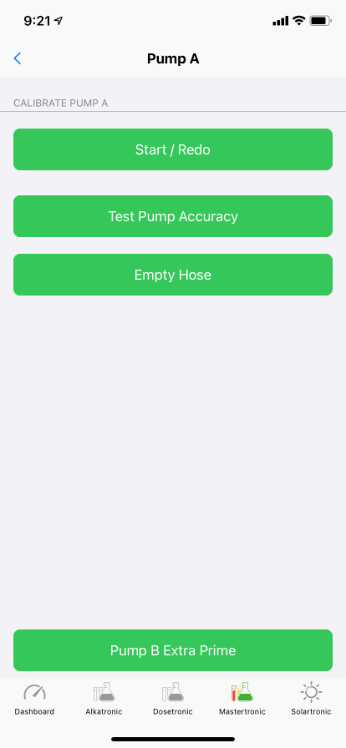
.jpg.21afb4b571bdf611b7df7a2c609eca9b.jpg)
.jpg.2cb28bbad282024dfd40085086464c88.jpg)
.jpg.4258608411874c15f342b495456a064c.jpg)
.jpg.d9f3197d4508a0609df7bf32962655cd.jpg)
.jpg.72f12130c2054e53f6bfb70fc4e9d540.jpg)
.jpg.92c4d4353025fe5c91821ef3ad603aed.jpg)
.jpg.4cdd3bbaaa16786b9524480c8841da7b.jpg)
.jpg.fe0116ad5e71dd2b84722a20b20b287e.jpg)
.jpg.3817e598f8b1986e944e3173c13bf788.jpg)
.jpg.6577d35c9c02e8d119d0fd45653b3714.jpg)
.jpg.b29116a6a7a71c8a42278ecbf8fb2781.jpg)
.jpg.3100906f6b9ae9458672af498745c09d.jpg)
.jpg.d38d4bfcc16b7b3b51a0f94c80812071.jpg)
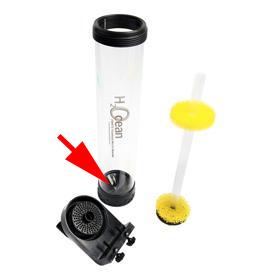
.jpg.217c247d2dd173e252ab8f7ad2b9c515.jpg)
.jpg.4a5c2b5fc2f98052527ff8d4b6e441eb.jpg)
.jpg.ff9293c781c00d70ee3c9a23ed0a79ab.jpg)
.jpeg.17ca9ae8f63c00cecbe0b68813ff0aad.jpeg)
.jpg.e552f41317ccec6f6e4d473d783c2b57.jpg)
.jpg.85e57e4514ff6fcfdd9f2a26f200325b.jpg)
(1).jpg.cf10c3520635d161b230beb250bd906c.jpg)